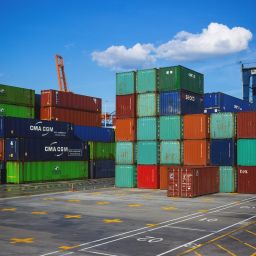The Pros and Cons of 12-Hour Shifts
In various industries, organizations often utilize 12-hour shifts as an alternative work schedule. These extended shifts typically involve employees working for 12 consecutive hours followed by an extended break. While 12-hour shifts offer some advantages, they also present certain challenges. In this article, we will explore the pros and cons of 12-hour shifts to help you understand their implications for both employees and employers.
Pros of 12-Hour Shifts:
1. Longer Breaks and More Days Off:
One of the primary advantages of 12-hour shifts is that they provide longer breaks between workdays. Employees working on this schedule often have more consecutive days off, allowing for better work-life balance and increased time for personal activities, family commitments, or pursuing hobbies. This can contribute to reduced stress and improved overall well-being.
2. Enhanced Workforce Continuity:
For industries that require continuous operations, such as healthcare, manufacturing, or public services, 12-hour shifts can help ensure workforce continuity. With fewer shift changes and handoffs, there is greater stability in the workforce, minimizing disruptions and maintaining consistent productivity levels.
3. Reduced Commuting:
Working longer shifts can result in fewer commute trips to and from work. This reduction in commuting time can be a significant advantage for employees, as it allows for savings on transportation costs, less time spent in traffic, and reduced environmental impact.
4. Increased Efficiency:
In certain job roles, 12-hour shifts can lead to increased efficiency and productivity. Employees have more uninterrupted time to focus on tasks, resulting in fewer transitions between workstations and decreased time spent on administrative activities. This can lead to improved concentration and task completion rates.
Cons of 12-Hour Shifts:
1. Fatigue and Decreased Alertness:
Working long shifts can lead to fatigue and decreased alertness, particularly towards the end of the shift. This can compromise employee performance, concentration, and decision-making abilities. Fatigue-related issues are especially concerning in safety-sensitive industries where lapses in attention can lead to accidents or errors.
2. Impact on Work-Life Balance:
While 12-hour shifts can provide longer breaks and more days off, the extended work hours can still disrupt work-life balance for some employees. The longer workday may limit personal time, reduce opportunities for family engagement, or make it challenging to participate in social activities. This can be particularly challenging for employees with significant caregiving responsibilities or those who value a greater work-life integration.
3. Increased Risk of Burnout:
The demanding nature of 12-hour shifts can increase the risk of burnout among employees. The prolonged work hours and potential for high-stress environments can take a toll on physical and mental well-being. Burnout can lead to decreased job satisfaction, reduced productivity, and increased turnover rates.
4. Difficulty Adjusting to Shift Patterns:
Adapting to a 12-hour shift pattern can be challenging for some employees. The extended work hours and irregular schedules may disrupt sleep patterns, making it difficult to establish a consistent sleep routine. This can lead to sleep disturbances, fatigue, and overall difficulty in adjusting to the demands of the shift.
Conclusion:
Implementing 12-hour shifts can offer advantages such as longer breaks, improved workforce continuity, reduced commuting time, and increased efficiency. However, it is important to consider the potential drawbacks, including fatigue, decreased work-life balance, increased risk of burnout, and the difficulty of adjusting to shift patterns.
To mitigate the challenges associated with 12-hour shifts, organizations should prioritize employee well-being by implementing strategies such as providing adequate rest breaks, promoting healthy lifestyle choices, fostering open communication, and offering flexibility in scheduling when possible.
Ultimately, the decision to adopt 12-hour shifts should be made based on the specific needs and requirements of the organization, taking into consideration the industry, job roles, and the preferences and well-being of the employees. By carefully weighing the pros and cons, organizations can determine whether 12-hour shifts are a suitable option to optimize productivity, employee satisfaction, and overall operational success.
















